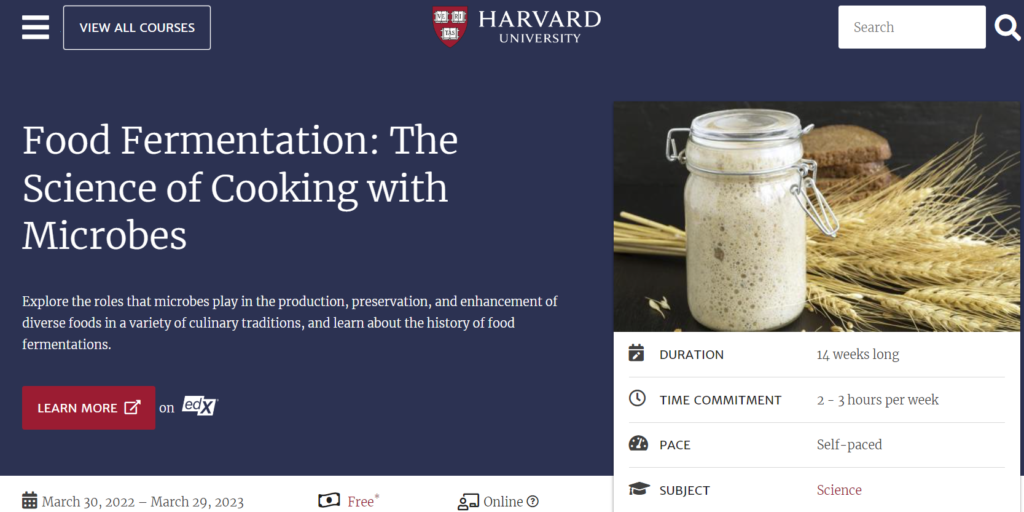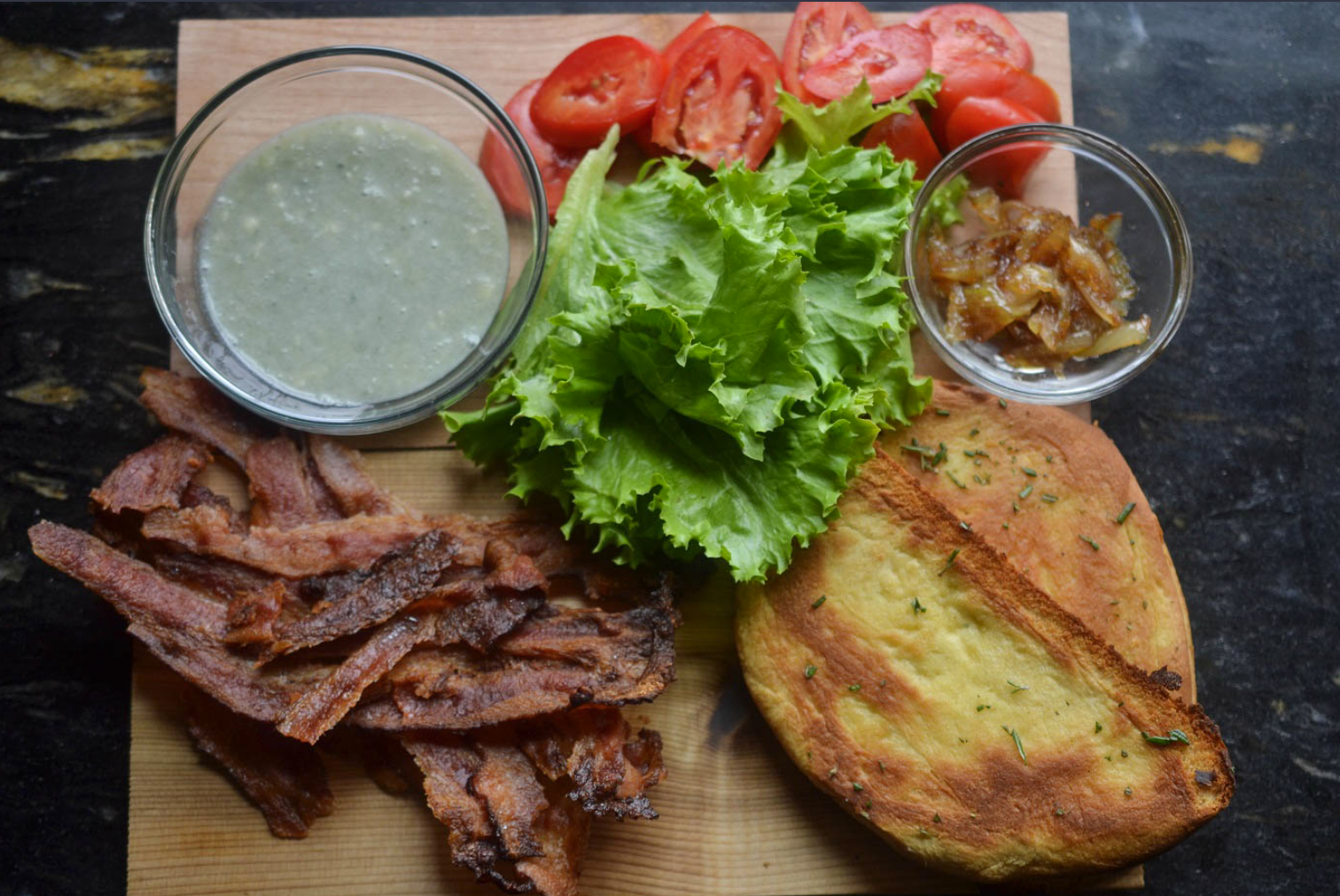
Fermented Food
If you are a fan of coffee, chocolate, cheese or yogurt, among other common items, then you’re a fan of fermented foods. There are a few things to keep in mind about fermenting. It helps transform some food items into things that we’re able to consume – and wouldn’t be able to (or maybe wouldn’t want to) otherwise. It’s been used as a means of storing/preserving food around the globe throughout history and still is to this day. It’s a way of adding flavor and taste to food. Finally, it’s incredibly easy – anyone can do it.
A more scientific explanation:
“Fermentation is a traditional cost-effective food processing and storage method that involves the evolution and metabolic activities of various beneficial microorganisms leading to the bioconversion of food products for centuries [1]. Traditional fermented foods are generally nutritious and contain the essential vital constituents for the human diet, such as carbohydrates, lipids, amino acids and trace elements. Fermented food products are highly nutritious and differ worldwide, due to many reasons, such as environmental conditions, cultural and social features. It is estimated that there are 5000 main types of fermented foods worldwide [2]. They are mainly categorized as fermented soy products, fermented dairy products, fermented plant products, and other types of important fermented products, such as red yeast rice and kimchi [3]. The consumption of fermented food products can satisfy the main nutritional human requirements and ameliorates the mineral bioavailability and digestibility of proteins and carbohydrates. In addition, fermentation usually improves the technological features of food products, such as sensorial features [4]. On the other hand, even though the food industry and international research community are mainly interested in processed foods production with desirable sensorial characteristics, attractive form and a long shelf life, an drastic change of direction has been recorded over the last two decades regarding the exploration of fermented traditional foods [5]. Τhe main reason for this new trend is the growing awareness and demands of consumers regarding healthy, natural, and high-quality food. In this manner, traditional fermented foods have been upgraded even further since recent research has established that various fermented foods are associated with specific health benefits to humans [6]. Some of these interesting findings are not confirmed, but have been well documented in clinical trials. Some studies agree that the consumption of fermented food products exhibits anti-diabetic, antihypertensive, antidiarrheal, anti-obesity and anti-aging effects, among others [7,8,9].” Source: Plessas S. The Rendering of Traditional Fermented Foods in Human Diet: Distribution of Health Benefits and Nutritional Benefits. Fermentation. 2022; 8(12):751. https://doi.org/10.3390/fermentation8120751 (https://www.mdpi.com/2011856
An easy to understand explanation:
“Fermentation makes foods more nutritious, as well as delicious. Microscopic organisms – our ancestors and allies – transform food and extend its usefulness. Fermentation is found throughout human cultures. Hundreds of medical and scientific studies confirm what folklore has always known: Fermented foods help people stay healthy. Many of your favorite foods and drinks are probably fermented. For instance: Bread, Cheese, Wine, Beer, Mead, Cider, Chocolate, Coffee, Tea, Pickles, Sauerkraut, Kimchi, Salami, Miso, Tempeh, Soy Sauce, Vinegar, Yogurt, Kefir, Kombucha.” Source: https://www.wildfermentation.com/
Easter Egg 1: The recipe below is a very easy path to follow and understand in order to end up with a small batch of sauerkraut from fermentation guru Sandor Katz (https://www.wildfermentation.com/making-sauerkraut-2/).
Making Sauerkraut
Written by Sandor Katz
Posted on April 27, 2012
Sandor Ellix Katz … has earned the nickname “Sandorkraut” for his love of sauerkraut. This is Sandorkaut’s easy sauerkraut recipe from his book Wild Fermentation: The Flavor, Nutrition, and Craft of Live-Culture Foods (Chelsea Green, 2003).
Timeframe: 3 days to 3 months (and beyond)
Vessel: 1-quart/1-liter wide-mouth jar, or a larger jar or crock
Ingredients (for 1 quart/1 liter):
2 pounds/1 kilogram of vegetables per quart/liter, any varieties of cabbage alone or in combination, or at least half cabbage and the remainder any combination of radishes, turnips, carrots, beets, kohlrabi, Jerusalem artichokes, onions, shallots, leeks, garlic, greens, peppers, or other vegetables
Approximately 1 tablespoon salt (start with a little less, add if needed after tasting)
Other seasonings as desired, such as caraway seeds, juniper berries, dill, chili peppers, ginger, turmeric, dried cranberries, or whatever you can conjure in your imagination
Process:
Prepare the vegetables. Remove the outer leaves of the cabbage and reserve. Scrub the root vegetables but do not peel. Chop or grate all vegetables into a bowl. The purpose of this is to expose surface area in order to pull water out of the vegetables, so that they can be submerged under their own juices. The finer the veggies are shredded, the easier it is to get juices out, but fineness or coarseness can vary with excellent results.
Salt and season. Salt the vegetables lightly and add seasonings as you chop. Sauerkraut does not require heavy salting. Taste after the next step and add more salt or seasonings, if desired. It is always easier to add salt than to remove it. (If you must, cover the veggies with dechlorinated water, let this sit for 5 minutes, then pour off the excess water.)
Squeeze the salted vegetables with your hands for a few minutes (or pound with a blunt tool). This bruises the vegetables, breaking down cell walls and enabling them to release their juices. Squeeze until you can pick up a handful and when you squeeze, juice releases (as from a wet sponge).
Pack the salted and squeezed vegetables into your jar. Press the vegetables down with force, using your fingers or a blunt tool, so that air pockets are expelled and juice rises up and over the vegetables. Fill the jar not quite all the way to the top, leaving a little space for expansion. The vegetables have a tendency to float to the top of the brine, so it’s best to keep them pressed down, using one of the cabbage’s outer leaves, folded to fit inside the jar, or a carved chunk of a root vegetable, or a small glass or ceramic insert. Screw the top on the jar; lactic acid bacteria are anaerobic and do not need oxygen (though they can function in the presence of oxygen). However, be aware that fermentation produces carbon dioxide, so pressure will build up in the jar and needs to be released daily, especially the first few days when fermentation will be most vigorous.
Wait. Be sure to loosen the top to relieve pressure each day for the first few days. The rate of fermentation will be faster in a warm environment, slower in a cool one. Some people prefer their krauts lightly fermented for just a few days; others prefer a stronger, more acidic flavor that develops over weeks or months. Taste after just a few days, then a few days later, and at regular intervals to discover what you prefer. Along with the flavor, the texture changes over time, beginning crunchy and gradually softening. Move to the refrigerator if you wish to stop (or rather slow) the fermentation. In a cool environment, kraut can continue fermenting slowly for months. In the summer or in a heated room, its life cycle is more rapid; eventually it can become soft and mushy.
Surface growth. The most common problem that people encounter in fermenting vegetables is surface growth of yeasts and/or molds, facilitated by oxygen. Many books refer to this as “scum,” but I prefer to think of it as a bloom. It’s a surface phenomenon, a result of contact with the air. If you should encounter surface growth, remove as much of it as you can, along with any discolored or soft kraut from the top layer, and discard. The fermented vegetables beneath will generally look, smell, and taste fine. The surface growth can break up as you remove it, making it impossible to remove all of it. Don’t worry.
Enjoy your kraut! I start eating it when the kraut is young and enjoy its evolving flavor over the course of a few weeks (or months in a large batch). Be sure to try the sauerkraut juice that will be left after the kraut is eaten. Sauerkraut juice packs a strong flavor, and is unparalleled as a digestive tonic or hangover cure.
Develop a rhythm. Start a new batch before the previous one runs out. Get a few different flavors or styles going at once for variety. Experiment!
Variations: Add a little fresh vegetable juice or “pot likker” and dispense with the need to squeeze or pound. Incorporate mung bean sprouts . . . hydrated seaweed . . . shredded or quartered brussels sprouts . . . cooked potatoes (mashed, fried, and beyond, but always cooled!) . . . dried or fresh fruit . . . the possibilities are infinite . . .
Easter Egg 2: Another offering toward the direction of simple and easy in the video below.
Easter Egg 3: Check out this Online and Free course (HarvardX) explaining the science and methods involved in fermenting foods in plain and easy to understand way.

Technical/Scientific Journal on fermenting if you’re so inclined: https://www.mdpi.com/journal/fermentation


